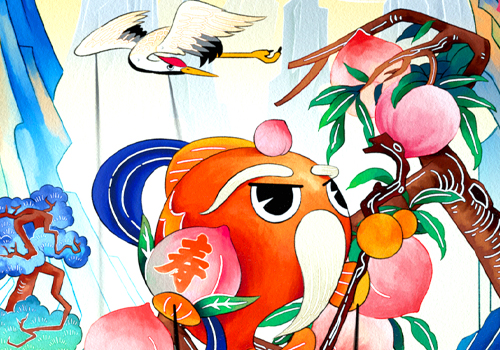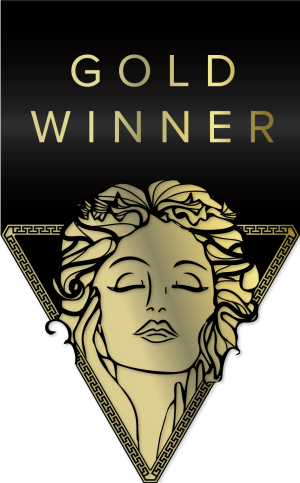
Interview
Dian Huang
China
Growing up surrounded by her father’s passion for Chinese calligraphy and poetry, Dian Huang found her own creative voice in typography and graphics. She brings over 13 years of hands-on experience across brand design, visual design, and 3D video.
1 Please give us a brief bio of yourself and your creative background.
My name is Dian Huang. I have been working in the design field for 13 years and hold a Bachelor of Arts in Design. I have extensive practical experience and diverse project experiences, including but not limited to brand design, visual design, and 3D video design.
2 What made you become/why did you choose to become a creative?
I think this might have something to do with my dad. He loves Chinese calligraphy and poetry, and his passion for writing sparked my interest in typography and graphics. It had a significant impact on my decision to pursue design as a major when I grew up. Design is another form of emotional expression, and it allows me to turn my ideas into reality. I find the process of creating deeply engaging.
3 Tell us more about your business/company, job profile, and what you do.
I currently work at Ant Group, a company focused on technological innovation. My role primarily involves overseeing the visual presentation of the company's core brand in market communications, including creative concept development, design execution, and post-optimization. The projects I work on span various forms of creative expression, including—but not limited to—brand design, graphic poster design, packaging design, 3D video design, and offline exhibition design. Additionally, as design trends evolve, I incorporate the use of AIGC (Artificial Intelligence Generated Content) into creative presentations.
4 What does “creativity” mean to you?
For me, design is a way to express myself, solve problems, and create value. It’s not just about aesthetics, but also about deeply understanding user needs—through insight and analysis—to create work that is both creative and meaningful.
5 To you, what makes a “creative” idea and/or design?
To be honest, I don't have a specific favorite style. I tend to create designs that make an immediate visual impact or evoke thought-provoking concepts.
6 Tell us about your creative and/or design process.
For me, a "good" design must first meet user needs and offer strong functionality and usability. Secondly, it should demonstrate unique creativity and aesthetic value that can resonate emotionally with people. Lastly, it should consider sustainability and reflect a sense of social responsibility.
7 What's your favorite part of the creative process and why?
The inspiration for this design comes from the creative process behind intangible cultural heritage (ICH) techniques. I transformed five ICH crafts into visual elements for posters, using the "work desk" as a setting to showcase tools, works-in-progress, and artisanal details—immersing viewers in the creative space. By blending contemporary design with traditional patterns, the posters preserve the essence of ICH while enhancing visual impact, aiming to convey the warmth and vitality of traditional craftsmanship.
8 Do you think your country and its cultural heritage has an impact on your creativity process?
Certainly. China’s rich intangible cultural heritage deeply influences my design process. My award-winning posters draw inspiration from five traditional craft techniques, recreating artisans’ workspaces to immerse viewers in both the final artworks and the process behind them. This approach blends heritage with modern aesthetics, showcasing how tradition fuels contemporary creativity while raising awareness about cultural preservation.
9 What was the biggest challenge with this project?
During the design process, the main challenges included balancing creativity with diverse client needs and managing tight deadlines. I overcame these challenges through continuous communication and collaboration, in-depth market research, and efficient time management.
10 How has winning an Award developed your practice/career?
Winning this award motivates me to pursue excellence and innovation in my future work, continuously challenging myself to enhance both its quality and impact.
11 Where do you see the evolution of creative industry going over the next 5-10 years?
I believe that in the next 5–10 years, the development of the design industry will focus more on intelligence, personalization, and sustainability. Design will be deeply integrated with technology to meet the increasingly diverse and personalized needs of people, while also placing greater emphasis on environmental protection and the responsible use of resources.
12 If you were a student entering this industry or an aspiring MUSE Creative Awards submitter, what advice would you give them?
My advice is to keep learning and growing—continually improving your professional skills and knowledge base. Maintain sharp observation and innovative thinking, draw inspiration from everyday life, be willing to experiment and take risks, and don’t be afraid of failure.
13 What resources would you recommend to someone who wants to improve their skills in the creative industry?
Read professional design books and magazines, participate in design forums, and attend industry exhibitions and seminars. Additionally, stay curious—explore and learn the latest technologies and software to keep your design aesthetics and skills at the forefront.
14 Do you have anything else you would like to add to the interview?
Design is an art without boundaries, and I will continue to explore and move forward in this field.

